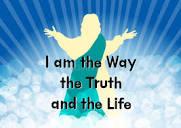
In his gospel, John’s central object is to proclaim the person of Jesus Christ as saviour. His prologue declares clearly that Jesus is the Word of God, who existed from the beginning. He concludes chapter 20 as follows: “But these are written so that you may come to believe that Jesus is the Messiah, the Son of God, and that through believing you may have life in his name.” (John 20:31)
He makes use of his characters, with their all-too-human confusion, to clarify his theology. Nicodemus, for example, has to learn about spiritual rebirth, having taken Jesus’ words literally about being “born from above.” (John 3:3-6)
In today’s reading John is nearing the end of his gospel with the Last Supper. He inserts a body of Christ’s teaching, which reaffirms what he set out in the prologue. Philip and Thomas seem to be the disciples who like things to be spelt out for them. The former wants a concrete image of the Father; this leads to Jesus giving a picture of the Father, not in the way Philip imagined, but as someone who is seen vividly in the person of his son. Thomas wants a road-map: again, he is given not a set of directions but rather the Lord himself. Last week we read about the parable of the Good Shepherd leading his flock and being the gate of the sheepfold; now he spells out even more clearly the message of his identity as the Word of God incarnate: “I am the Way, the Truth and the Life.”